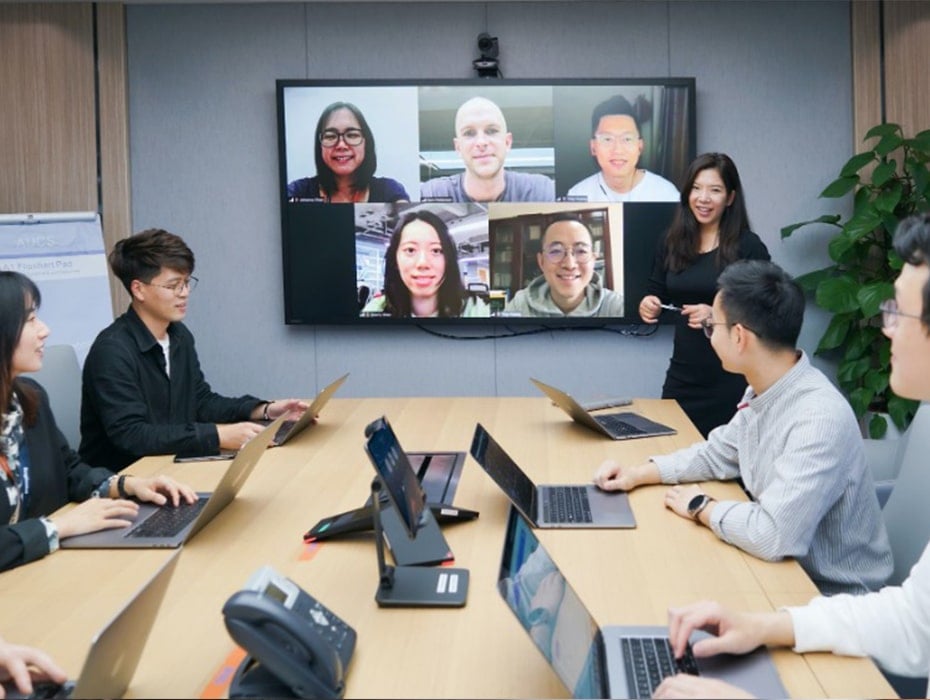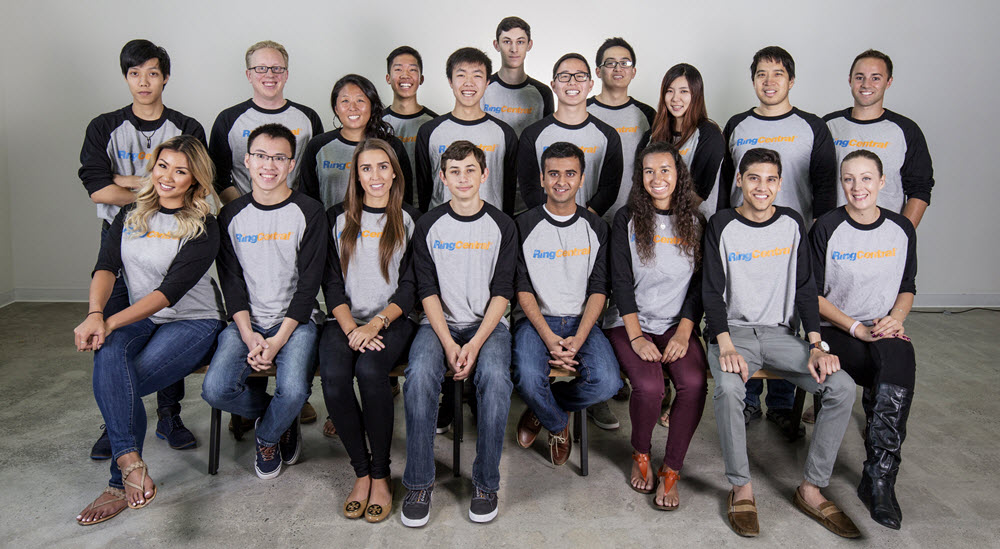Highlights:
- What the world and workforce would be like after Covid
- Study in our China office shows a mix of those who want to return to office vs. work remotely
In many years of my career in the IT industry, I have helped numerous global enterprises crucial and successful Digital Transformation. From implementing ERP for governing end to end corporate operations in the early time, to digitalizing distributed supply chain and manufacturing execution in the era of Industry 4.0, transformation brought in new opportunities and provided these enterprises distinct competitive advantages. However, none of these enterprises could have been successful in their field without the most fundamental core value they all share.
Successful enterprises share one common ingredient of success – Effective Communication.
Digitalizing Effective Communication
In the world of business, communication happens both as Internal and External, and the effectiveness of them constitutes the cycle of success. Good internal communication can engage your employee and facilitate them to collaborate towards your corporate vision. Efficient external communication brings in partners and customers and directly contributes to your revenue. This turns into a cycle as engaged employees can deliver better products and services for more customers, and high customer satisfaction will engage your employees deeper to the company’s right vision. No enterprise can be successful without being effective in this cycle. RingCentral is a company that aims at providing a reliable cloud platform to digitalize this cycle of success through effective communication.
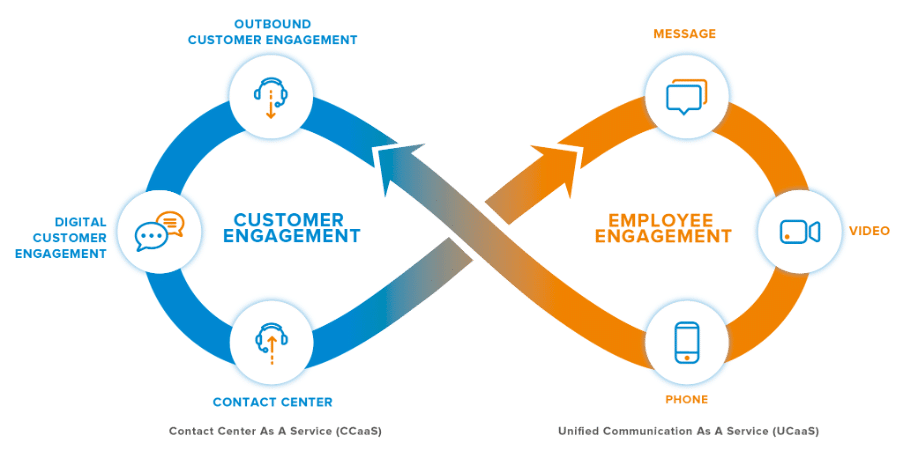
Post-COVID Work Model
As the world is transforming under the unexpected pandemic, the traditional way of communication is being challenged. Before COVID, employees were almost 100% in office making communication primarily in the form of direct physical interactions. During COVID, due to lockdown and other reasons, employees have to work from home or in a remote and safe location. Communication is limited to online tools but since everyone is in the same situation, no one actually feels disadvantaged or honestly has alternatives. As vaccination begins to be widely adopted, we are finally seeing light at the end of the tunnel. Many companies have started planning for RTO (Return To Office), but are you aware what new challenges may come in a Post-COVID work environment?
Many believe that after COVID is over, life will be back to what it exactly was in 2019. Unfortunately, many studies show a different result. The Post-COVID business world will likely be a mixture of Pre-COVID + During-COVID work models. Some call this a Hybrid Workplace, composed of employees on-site and remote.
We did a study in our own offices in China. Since the COVID situation there was eased earlier, RTO was started in mid 2020 but employees could choose to continue working remotely. Despite the first few days where we saw employees suffering Work-From-Home (WFH) fatigue rushing to office, we saw a stable trend that approximately 1/4 of employees chose to work remotely consistently. This allows us to understand the mix of employee’s preferences and habits in a hybrid work environment.
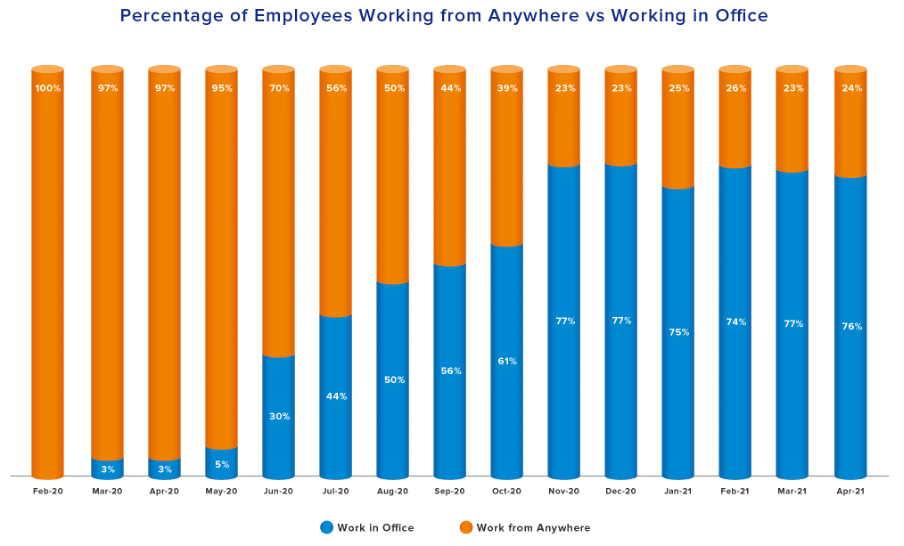
Communication in a Hybrid Workplace
Maintaining communication effectiveness under a hybrid work environment is something brand new to the world. But despite the uncertainty, our team in China came out of this with higher productivity and employee engagement. The team was even awarded Best Company to Work For in Asia 2020 and China Healthiest Workplace 2020 – 2021. New products were released even faster and in higher quality during this time. Some practices there are worth studying.
Our team did not see RTO as the process of returning to how things were done in the past, but instead, an opportunity to transform and collaborate in a better way. Based on the reliable RingCentral communication cloud, meetings involving colleagues online and offline are scheduled as a normal practice. Some project teams even setup virtual scrum rooms leveraging state-of-the-art technologies like RingCentral Rooms, where colleagues can hop in and out physically in the office or anywhere via the mobile app, whenever they need to discuss or chat with someone. This new habit not only brought our WFH colleagues virtually together with the folks in office, but it also helped us address an old headache of bringing employees from different office sites or different floors of the office building together instantly.
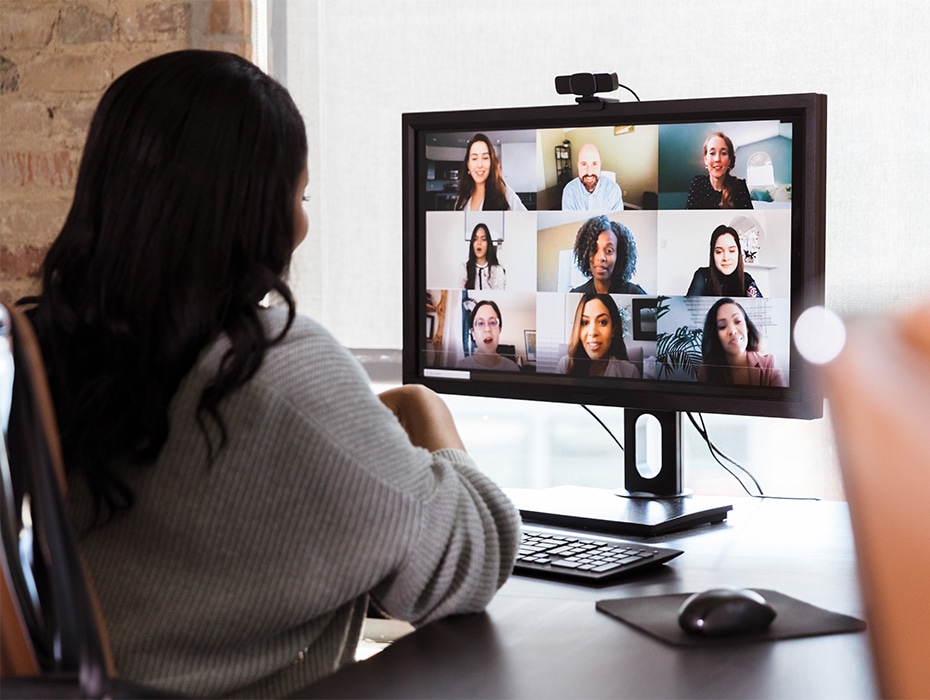
Some employees provided feedback that they used to have casual chat with other colleagues while they walked down the hallway or in a coffee corner. Hybrid workplace may have reduced the chance that you accidentally bump into someone for a chat, but with the help of technology, chances that you discover someone you want to have a chat with are much higher. Leveraging the RingCentral Video app, people with common interest can be pulled in a team easily. Whether you are having a cup of tea or waiting for an elevator, you can chat verbally or via text messages at your fingertips. Our team in China not only uses this for project discussion, but also for any interesting topics like cooking ideas for dinner, weekend suggestions, or childcare tricks, etc. There is also a large group involving all employees and that group is never short of creative and hilarious content. The result is an even stronger morale and sense of together-ness established.
Leading the Transformation
Like any transformation, leadership plays a crucial role in success. Leaders must acknowledge that it’s not their choice whether they allow people to work remotely. If they don’t, someone else will. Leaders should also understand the challenges and opportunities a hybrid work model can bring. There are hard limitations in a hybrid workplace, but there are also distinct advantages in it. Embracing the differences is an important step in the transformation process. Technology, as mentioned above, provides reliable ways to deliver effective communication, but it requires work policies and encouragement from leaders to form a new work model. At the beginning of RTO, colleagues who planned to work remotely expressed feelings of uncertainty on whether the Work From Anywhere policy will continue and whether they will be left behind by not being in office. Employees who decide to work in office, on the other hand, have concerns about how effective the collaboration can be when some team members are not in their sight. As the policy remains stable through strong leadership support, the employee’s confidence level of being successful in the new world increases.
Throughout the transformation process, there was a vast amount of feedback flowing around. Our management team in China openly collected them as a way to adapt to the new world. An Engagement Committee composed of voluntary employees in office and remote was formed and they meet regularly to discuss the feedback and improvement areas. There is no one-size-fits-all policy, so adjustments were made as we go, and employees can see improvement and progress along the way. Creative ideas are constantly generated from the committee on how to engage the team better without a physical boundary. Channeling these inputs into the right direction and form related work policies to support them is exactly how leaders can make the transformation a success.
Change or Be Changed
Some companies go through transformation in order to survive from an unwanted situation, some do it to harness new opportunities and take business to the next level. Whichever situation you are in depends on when you start the transformation.
Let me share a quote from one of my favorite authors Malcolm Gladwell – “Transformation isn’t about improving. It’s about re-thinking”. I hope our experience can help you better plan for and be successful in the Post-COVID new world.
Originally published May 27, 2021, updated Jun 04, 2021
